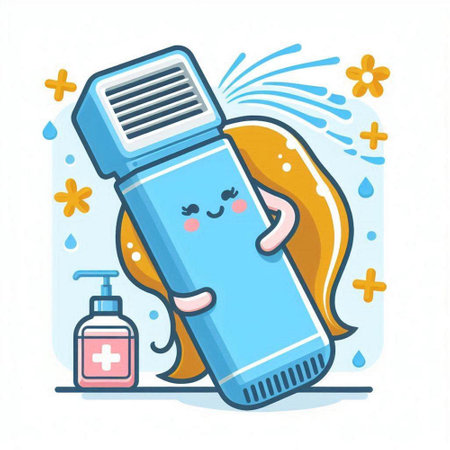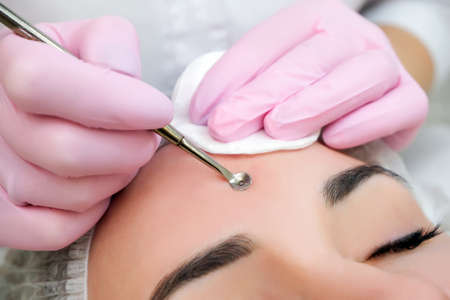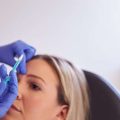Introduction to Radiofrequency Skin Tightening
Radiofrequency (RF) skin tightening is rapidly becoming one of the most sought-after non-surgical cosmetic treatments in the UK. This innovative procedure utilises controlled radiofrequency energy to gently heat the deeper layers of the skin, stimulating collagen and elastin production. As a result, patients experience firmer, smoother, and more youthful-looking skin without the need for invasive surgery or prolonged downtime. The appeal of RF technology lies not only in its effectiveness but also in its versatility—suitable for addressing mild to moderate skin laxity on the face and body. With British attitudes increasingly favouring subtle, natural enhancements over dramatic surgical changes, RF skin tightening fits seamlessly into current trends. Clinics across the UK are seeing a steady rise in demand from individuals seeking safe, clinically-proven methods to rejuvenate their appearance and maintain confidence as they age.
UK Regulations and Professional Standards
In the United Kingdom, radiofrequency (RF) skin tightening is categorised as a non-surgical cosmetic procedure and is subject to specific laws and professional standards to ensure client safety. Understanding these regulations is crucial for both practitioners and clients seeking such treatments.
Relevant UK Laws
Currently, there is no single overarching law that regulates all non-surgical cosmetic treatments in the UK. However, several legal requirements must be adhered to:
| Area | Regulation/Law | Key Points |
|---|---|---|
| Device Safety | Medical Devices Regulations 2002 (as amended) | RF devices must have a CE mark, indicating conformity with EU/UK standards for safety and performance. |
| Treatment Providers | Consumer Protection Act 1987 & Health and Safety at Work etc. Act 1974 | Practitioners must provide accurate information and maintain safe working conditions. |
| Advertising | Committee of Advertising Practice (CAP) Code | Claims about RF skin tightening must be truthful, substantiated, and not misleading. |
Industry Standards and Best Practices
Industry bodies such as the Joint Council for Cosmetic Practitioners (JCCP) and Save Face provide voluntary registers of accredited practitioners. Clinics adhering to these standards demonstrate commitment to safe practice, ongoing training, and ethical conduct. The Care Quality Commission (CQC) may also regulate clinics if they offer medical care alongside aesthetic services.
Professional Qualifications Required
While legally anyone can offer RF skin tightening in the UK unless invasive techniques are used, reputable clinics require practitioners to hold relevant qualifications. These typically include:
- A nationally recognised qualification in beauty therapy or aesthetics (such as Level 3 NVQ or higher)
- Manufacturer-led training on specific RF equipment used in the clinic
- Continuous professional development (CPD) in safety protocols, infection control, and emergency procedures
The Importance of Choosing Qualified Practitioners
Selecting a practitioner who meets or exceeds these standards reduces risks and improves treatment outcomes. Always verify a provider’s credentials through industry registers or by requesting proof of qualifications prior to booking an RF skin tightening session.

3. Safety Considerations and Potential Risks
When considering radiofrequency (RF) skin tightening in the UK, understanding the safety profile and potential risks is crucial. RF treatments are generally regarded as safe when performed by trained professionals using approved devices. However, as with any cosmetic procedure, there are important factors to consider to ensure your wellbeing throughout the process.
Common Side Effects of RF Skin Tightening
Most individuals experience minimal downtime following RF treatments. Common side effects may include temporary redness, mild swelling, or a warm sensation in the treated area. These effects typically subside within a few hours to a couple of days. It is rare, but some patients may experience minor bruising or tenderness, especially if they have sensitive skin.
Who is a Suitable Candidate?
Radiofrequency skin tightening is suitable for adults seeking non-surgical improvement in skin laxity or mild wrinkling. Ideal candidates generally have early signs of ageing and realistic expectations regarding results. However, it may not be appropriate for individuals who are pregnant, have metal implants in the treatment area, or suffer from certain medical conditions such as active skin infections or severe dermatological diseases. A thorough consultation with a qualified practitioner will help determine your suitability based on your health history and aesthetic goals.
Questions to Ask Your Provider in the UK
If you are considering RF treatment, it is essential to choose a reputable clinic regulated by the Care Quality Commission (CQC) or other relevant authorities. Always ask your provider about their qualifications, the specific device they use, and whether it holds CE marking for safety compliance in the UK. Inquire about possible side effects, aftercare instructions, and what results you can realistically expect from your treatment plan. This proactive approach ensures transparency and helps set appropriate expectations for your RF skin tightening journey.
4. What to Expect During the Procedure
Radiofrequency (RF) skin tightening in the UK is a well-structured, regulated process designed for both safety and comfort. Here is a detailed breakdown of what you can typically expect, from your initial consultation through to the day of your treatment:
Initial Consultation
Your journey begins with an in-depth consultation at a CQC-registered clinic. During this session, a qualified practitioner will assess your medical history, discuss your aesthetic goals, and evaluate your suitability for RF treatment. You’ll have the opportunity to ask questions about the procedure, potential side effects, and expected outcomes. The practitioner will also explain aftercare requirements and provide a bespoke treatment plan tailored to your needs.
Pre-Treatment Preparation
Once you’ve decided to proceed, you may be given specific pre-treatment instructions. These often include avoiding direct sun exposure, discontinuing certain skincare products (such as retinoids or acids), and staying hydrated. In some cases, you’ll be advised to arrive with clean, make-up free skin on the day of the procedure.
Typical Pre-Treatment Instructions Table
| Instruction | Purpose |
|---|---|
| Avoid sun exposure for 1 week | Minimise risk of irritation or hyperpigmentation |
| Stop using retinoids/active acids 3 days prior | Reduce skin sensitivity during treatment |
| Hydrate adequately | Optimise skin’s healing response |
| No make-up or skincare on treatment area on the day | Ensure device efficacy and hygiene |
The Day of the Procedure
On arrival at the clinic, you’ll be welcomed by your practitioner who will review your consent forms and re-confirm your suitability. The treatment area is thoroughly cleansed before a cooling gel is applied to enhance comfort and facilitate smooth movement of the RF device. Most RF procedures are virtually painless; patients often describe the sensation as a warm massage.
Treatment Steps Overview Table
| Step | Description |
|---|---|
| Cleansing | The skin is cleaned to remove oils and debris. |
| Gel Application | A conductive gel is applied for comfort and device efficiency. |
| RF Energy Delivery | The handpiece moves over target areas delivering controlled radiofrequency energy. |
| Post-Treatment Soothe | A soothing product may be applied; mild redness is common but subsides quickly. |
Aftercare Advice
Your practitioner will provide personalised aftercare guidance. This usually includes avoiding strenuous exercise, hot baths, and direct sunlight for at least 24 hours post-treatment. You’ll also be encouraged to use gentle skincare products and apply SPF daily.
The entire process – from consultation to procedure – is designed around patient safety and satisfaction in accordance with UK regulations. By choosing a reputable clinic, you can feel confident that every step aligns with British standards for quality care and results.
5. Post-Treatment: Recovery and Results
After undergoing radiofrequency skin tightening in the UK, it is normal to be curious about what happens next. Most patients find that the procedure requires minimal downtime, making it a popular choice for those with busy schedules. Immediately following the session, you may notice some mild redness, warmth, or slight swelling in the treated area. These effects are typically short-lived and resolve within a few hours to a day. Unlike more invasive cosmetic treatments, there is generally no need to take time off work or avoid social activities.
Aftercare Tips for Optimal Recovery
To ensure the best possible outcome and support your skin’s natural healing process, follow these practical aftercare tips:
- Keep the treated area clean and moisturised: Use gentle cleansers and apply a soothing, hydrating cream as recommended by your practitioner.
- Avoid excessive heat exposure: For at least 48 hours post-treatment, steer clear of saunas, steam rooms, hot showers, and intense exercise.
- Protect your skin from the sun: Apply broad-spectrum sunscreen daily to prevent pigmentation changes or sensitivity.
- Refrain from using harsh products: Avoid exfoliants, retinoids, or strong acids for several days after treatment.
Expected Timelines for Visible Results
The results of radiofrequency skin tightening develop gradually as collagen production increases in the weeks following your treatment. Some individuals notice an immediate improvement in skin texture and firmness due to initial tissue contraction; however, optimal results usually become evident between 4 to 12 weeks post-procedure. Depending on your unique skin type and goals, a course of multiple sessions—often spaced a few weeks apart—may be recommended for the most noticeable and long-lasting effect.
Long-Term Maintenance
While radiofrequency treatments can deliver impressive improvements in skin tightness and contouring, maintenance sessions every 6 to 12 months are advised to preserve results over time. Your practitioner will provide personalised advice based on your response to treatment and desired outcomes. By following appropriate aftercare and adhering to any professional recommendations, you can expect smoother, firmer skin with minimal disruption to your daily routine.
6. Choosing a Clinic or Practitioner in the UK
When considering radiofrequency skin tightening treatments in the UK, selecting a reputable clinic or practitioner is paramount for both safety and optimal results. Here are some key factors to guide your choice:
Check Credentials and Qualifications
Ensure that your chosen practitioner holds recognised qualifications in aesthetic medicine or dermatology. In the UK, it is advisable to seek professionals registered with the General Medical Council (GMC) or the Nursing and Midwifery Council (NMC) for medical practitioners. For non-medical professionals, registration with bodies such as the British Association of Beauty Therapy & Cosmetology (BABTAC) adds an extra layer of reassurance.
Assess Experience and Specialisation
Look for clinics and practitioners with substantial experience specifically in radiofrequency skin tightening. Ask how many procedures they have performed and request to see before-and-after images of previous clients. This not only demonstrates their proficiency but also helps set realistic expectations for your own results.
Review Clinic Standards and Facilities
A reputable clinic should operate from clean, well-maintained premises and adhere to strict hygiene protocols. The use of CE-marked devices, which comply with UK safety standards, is another essential indicator of quality. Do not hesitate to ask about the equipment being used during your consultation.
Seek Transparent Consultations
Your initial consultation should be comprehensive, including a detailed discussion of your medical history, desired outcomes, and potential risks. Reputable practitioners will never rush this process or pressure you into making quick decisions.
Read Reviews and Testimonials
Take time to research online reviews on trusted platforms such as Trustpilot or Google Reviews. Honest feedback from previous clients can provide valuable insights into the level of care, professionalism, and aftercare offered by the clinic.
Prioritise Aftercare and Support
Finally, ensure that the clinic offers robust aftercare services and clear advice on what to expect following your procedure. A commitment to follow-up appointments demonstrates a practitioner’s dedication to client satisfaction and safety—key hallmarks of a trustworthy provider in the UK aesthetics industry.


